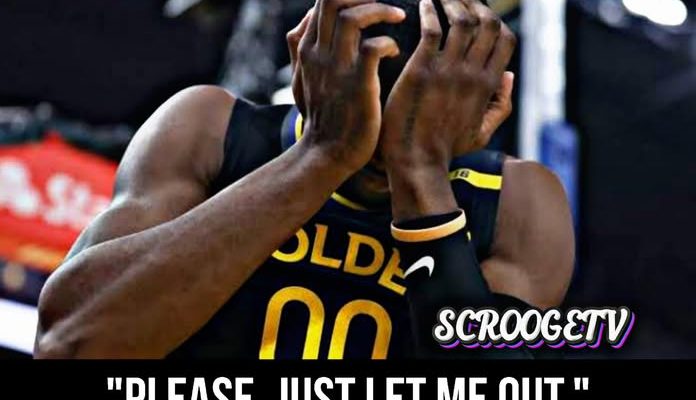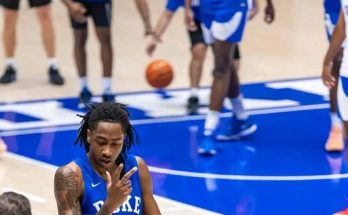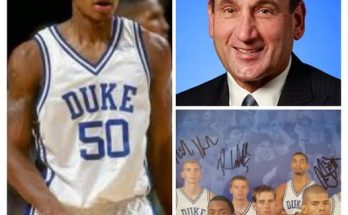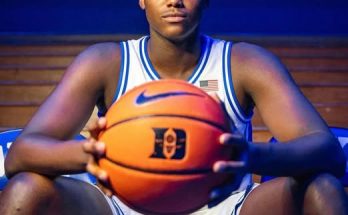The Golden State Warriors are heading into what could be a pivotal season in their franchise history, but tension is bubbling beneath the surface, and it centers around one of their most promising young talents: Jonathan Kuminga. Recently, reports have surfaced suggesting that the Warriors plan to keep Kuminga on the roster, a development that has reportedly left the young forward frustrated and unhappy. This unexpected twist could have significant implications not only for Kuminga’s career trajectory but also for the team’s chemistry and championship aspirations moving forward.
Jonathan Kuminga entered the NBA with high expectations. Selected seventh overall in the 2021 NBA Draft, Kuminga was heralded as a dynamic athlete with a unique combination of size, strength, and explosive potential. His skill set promised a bright future, and the Warriors envisioned him as a key piece in their transition from a team anchored by veterans like Stephen Curry, Klay Thompson, and Draymond Green to a sustainable, championship-caliber squad blending youth and experience. However, despite flashes of brilliance, Kuminga’s progress has been uneven. His development has at times stalled, leading to questions about his consistency and fit within the Warriors’ system.
The rumors that the Warriors might keep Kuminga have reignited tensions between the player and the organization. According to insiders, Kuminga has expressed significant dissatisfaction with the possibility of remaining in Golden State under the current circumstances. His frustration stems from a desire for a clearer role, more playing time, and an opportunity to establish himself as a cornerstone rather than a peripheral figure. Reports suggest that Kuminga feels the Warriors’ current plans do not fully align with his career ambitions, fueling speculation about potential trade requests or holdouts.
From the Warriors’ perspective, retaining Kuminga makes strategic sense. The team has invested considerable resources into developing him, both financially and in terms of coaching attention. Kuminga’s athleticism and versatility make him a valuable asset, especially on a roster that has had to adapt due to injuries and aging veterans. Golden State likely sees Kuminga as a crucial piece of their long-term future, capable of growing into a more consistent and impactful player. Keeping him allows the Warriors to maintain flexibility while hoping that further development and experience will unlock his full potential.
However, the challenge lies in balancing Kuminga’s ambitions with the Warriors’ immediate needs. Golden State is currently in a championship window, and while they are eager to build for the future, they must also remain competitive now. This delicate balance means that the team’s rotation and minutes distribution are tightly managed, often favoring veterans or players with more proven consistency. Kuminga, still young and raw, may find himself caught in the middle, battling for meaningful minutes while trying to prove that he deserves a larger role.
The situation raises important questions about player development in the modern NBA. Young players like Kuminga often find themselves in limbo—talented enough to demand opportunity, but not yet fully ready to dominate. This tension can create friction, particularly when expectations are high on both sides. Players want to assert themselves, build their brands, and maximize their earnings potential, while teams seek to nurture growth without sacrificing team cohesion or performance. Kuminga’s reported unhappiness highlights this dynamic, underscoring the complexities of managing young talent in a results-driven league.
Moreover, the drama surrounding Kuminga’s future may impact team chemistry. The Warriors have long been praised for their strong locker room culture, a factor credited with helping them win multiple championships. However, when a young player openly voices dissatisfaction or becomes a distraction, it can ripple through the squad, affecting focus and morale. Head coach Steve Kerr and the front office will need to navigate these waters carefully to prevent discord from undermining the team’s objectives.
Trade speculation has inevitably followed these reports. Rumors are circulating that the Warriors might entertain offers for Kuminga, especially if he remains unhappy and demands a move. Potential suitors could see value in acquiring a young, athletic forward with upside, particularly if Golden State is willing to negotiate from a position of strength. However, trading Kuminga would also mean parting with a promising talent who could one day be a key contributor, making any deal complex and high-stakes.
On the flip side, Kuminga’s decision to express frustration publicly—or through intermediaries—can be a double-edged sword. While it might prompt the Warriors to reconsider his role or open trade discussions, it could also strain relationships with coaches, teammates, and management. Professionalism and patience are often critical to a young player’s growth, and impatience can be costly. How Kuminga handles this period will likely influence not only his immediate playing situation but also his reputation across the league.
Analysts and fans alike are watching closely. Kuminga’s talent is undeniable, and many believe that with the right environment and guidance, he can become a breakout star. The Warriors’ ability to harness that talent effectively will be key to their sustained success. The current friction presents both a challenge and an opportunity—if handled wisely, it could serve as a catalyst for Kuminga’s maturation and a deeper commitment from the organization to his development.
In addition to internal team dynamics, this situation highlights broader trends in the NBA regarding young player empowerment and contract negotiations. Players today are more aware of their value and have more leverage than ever before. They are not hesitant to voice concerns or seek moves that align better with their career goals. Teams must adapt to this new reality, balancing competitive needs with player satisfaction to maintain harmony.
As the Warriors prepare for the upcoming season, all eyes will be on how the Kuminga saga unfolds. Will Golden State reaffirm their commitment to him with a clear path forward, or will this friction lead to a shakeup that alters the team’s roster? How Kuminga responds—whether with renewed focus and growth or continued dissatisfaction—will significantly shape his NBA journey and the Warriors’ championship prospects.
Ultimately, this situation serves as a reminder that even the most talented athletes face challenges beyond the court. Navigating team politics, managing expectations, and maintaining mental resilience are all part of the professional athlete’s journey. For Jonathan Kuminga and the Golden State Warriors, the coming months will test their ability to align ambitions, foster growth, and pursue collective success amid individual frustrations.
The outcome of this drama could have ripple effects throughout the league, influencing how teams handle young stars and how players advocate for their roles. For now, the Warriors remain hopeful that Kuminga’s potential will shine through and that this rough patch can be smoothed over with communication, compromise, and a shared vision for the future. Fans will be watching closely, eager to see whether Kuminga can overcome these obstacles and fulfill the promise that once made him one of the NBA’s most exciting prospects.



